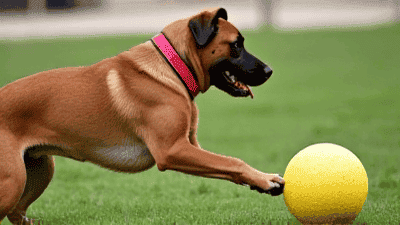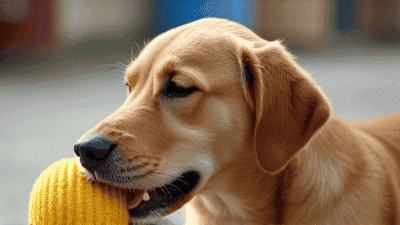
Play is an essential part of a dog’s life, providing physical exercise, mental stimulation, and opportunities for social bonding. But did you know that playtime can also be a powerful tool for training your dog? Understanding your dog’s play behavior and incorporating it into their training routine can help reinforce positive behaviors, build a stronger bond, and make learning fun for both you and your furry friend.
Play provides dogs with the exercise they need to maintain a healthy weight, build muscle, and improve cardiovascular health.
Interactive play stimulates a dog’s mind, preventing boredom and reducing destructive behaviors.
Play helps dogs develop social skills, build confidence, and strengthen their bond with their owners and other animals.

Social play involves interactions between dogs or between dogs and humans. It includes activities like chasing, wrestling, and tug-of-war. Social play is essential for teaching dogs how to communicate and interact appropriately.
Object play focuses on toys or other objects. Dogs may chase, fetch, or chew on toys, which helps satisfy their natural prey drive and keeps them entertained.
Solitary play occurs when a dog entertains themselves without the involvement of others. This can include chewing on a bone or playing with a toy. Solitary play is important for teaching independence.
Exploratory play involves investigating the environment, such as sniffing, digging, or pawing at objects. This type of play satisfies a dog’s curiosity and helps them learn about their surroundings.
Incorporate commands like “sit,” “stay,” and “come” into playtime. For example, ask your dog to sit before throwing a ball or to stay before releasing them to chase a toy.
Use play to teach your dog self-control. For instance, ask your dog to wait before grabbing a toy or to release a toy on command. This helps them learn patience and obedience.
Encourage shy or anxious dogs to play with interactive toys or engage in social play. Gradually increase the complexity of the activities to help them build confidence.
Playtime is an excellent opportunity to strengthen your bond with your dog. Use positive reinforcement, such as treats and praise, to reward good behavior during play.

Interactive toys, such as puzzle feeders or treat-dispensing toys, keep dogs mentally stimulated and can be used to reinforce problem-solving skills.
Balls, frisbees, and other fetch toys are ideal for teaching commands like “fetch,” “drop it,” and “come.”
Tug toys are great for teaching impulse control and strengthening the bond between you and your dog. Always use a designated tug toy and establish clear rules for tug-of-war.
Chew toys satisfy a dog’s natural urge to chew and can be used to redirect destructive behavior.
Make sure playtime remains enjoyable for your dog. If they seem bored or frustrated, switch to a different activity or take a break.
Reward your dog with treats, praise, or play itself when they follow commands or exhibit good behavior.
Consistency is key to effective training. Use the same commands and rules during playtime as you do in other training sessions.
Avoid overly rough play, as it can lead to injury or reinforce aggressive behavior. Keep play sessions calm and controlled.
If your dog becomes overly excited or starts displaying unwanted behaviors, such as nipping or barking, take a break and calm them down before resuming play.

Some dogs may guard their toys or treats during play. To address this, teach your dog the “drop it” command and practice trading toys for treats.
If your dog becomes too excited during play, take a break and redirect their energy into a calmer activity, such as a puzzle toy.
If your dog ignores commands during play, use higher-value rewards, such as their favorite treat or toy, to regain their attention.
If your dog shows signs of aggression during play, such as growling or biting, stop the activity immediately and consult a professional trainer.
Start your day with a quick play session to energize your dog and prepare them for the day ahead.
Wind down the day with a calming play session to help your dog relax and burn off any remaining energy.
Engage in interactive play, such as fetch or tug-of-war, to strengthen your bond and provide mental stimulation.
Provide your dog with toys for solo play when you’re busy or away from home.
Allowing your dog to play with other dogs helps them develop social skills and learn appropriate behavior.
Always supervise play sessions between dogs to ensure they remain safe and positive.
Introduce new dogs gradually and in a controlled environment to prevent conflicts.
Use play to redirect destructive behaviors, such as chewing on furniture or digging in the yard. Provide appropriate toys and activities to satisfy your dog’s needs.
Interactive toys and puzzle feeders can help alleviate separation anxiety by keeping your dog occupied while you’re away.
Use play to channel your dog’s energy and reduce excessive barking. Provide mental and physical stimulation to keep them calm.
Play is more than just a fun activity for dogs—it’s a powerful tool for training, socialization, and problem-solving. By understanding your dog’s play behavior and incorporating playtime into their training routine, you can reinforce positive behaviors, build a stronger bond, and create a happier, healthier life for your furry friend. Remember to keep playtime fun, positive, and consistent, and always prioritize your dog’s safety and well-being. With the right approach, play-based training can be a rewarding and effective way to help your dog thrive.